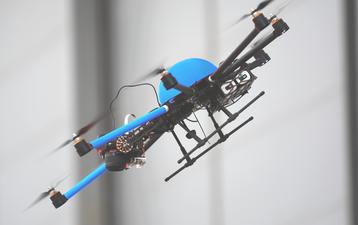Runway pavement inspections using airsight drone
Paris Charles De Gaulle Airport
Groupe ADP is a pioneer in the utilisation of drones at its airports, e.g. for the inspection of terminal buildings or for the calibration of air navigation equipment. So far, for practical and safety reasons such flights within the airside area of the airport were limited to tethered operations only, where the drone is tied to the ground via a leash.
In August 2016, ADP selected airsight to conduct the first large-scale inspection of Paris Charles De Gaulle Airport (CDG) using an untethered drone. This mission had for overall objective to determine if drone-based pavement inspections, as developed and already in used by airsight at German Airports since 2015, could be used in the future in conjunction withconventional on-site visual inspections performed by Groupe ADP personnel driving the runway.
Prior to the inspection, an operational concept and safety case were developed and validated by ADP, the local Air Navigation Service Provider “SNA-RP” and airsight, to integrate safely the missions within airport operations.
During the inspection, a surface of more than 200 thousands square meters was captured – almost 30 soccer fields. To minimise impacts on capacity, the overall net flight time of approximately 1 hour and 45 minutes was split into nine individual flight segments, to take advantage of periods of lower traffic. Thanks to a proper mission preparation, a comprehensive support of Groupe ADP and a close collaboration with air traffic control, the maximum runway occupancy time for a flight segment was 18 minutes. This includes the time required to enter and exit the runway, obtain ATC clearances as well as for conduction of final FOD checks after each drone flight.
As a next step, all gathered data will be post-processed at airsight’s premises in Berlin to create a geo-referenced image of the runway with an extremely high resolution. This will serve as a basis for a detailed assessment of the runway’s pavement conditions, which will be documented in form of a report and associated interactive maps containing all identified distresses, taking into account relevant requirements of ICAO and EASA and other international standards. This analysis and subsequent preventive maintenance actions enable the Airport operator to extend the lifetime of the pavement, reduce cost, and increase safety for operating aircraft.
Key Facts


